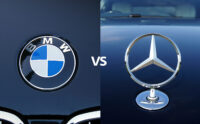Should your company rebrand?
Have you changed? Has your customer changed? Are you not achieving your business goals? We offer insights into common issues that drive the need for rebranding.
 Photo © Copper and Wild, Unsplash
Photo © Copper and Wild, Unsplash
Rebranding offers an opportunity to tell a brand story in a clearer, more compelling way. It involves discovery and research to define a brand’s strengths, weaknesses, opportunities, and threats (SWOT defined) and to refine communication strategies. And it comes in many shapes and sizes. It can involve wholesale change—a new name and visual identity, perhaps (Verizon, for example, came to be through the merger of Bell Atlantic and GTE). It can also be more of a subtle repositioning of how you speak to your consumers (as Coleman did to appeal to a new generation of outdoors recreationalists).
A rebrand can proceed as a big bang transformation or a subtle evolution. When done well, it enables you to retain the brand equity you’ve amassed while shifting to respond to change—internal or external.

But how do you know whether your organization, or one of the brands in its portfolio, needs a rebrand? Rebranding can be driven by a variety of factors:
You aren’t achieving business goals.
Perhaps sales are down or social media initiatives aren’t going in your favor. Rebrands are often triggered by the realization that a brand isn’t performing well in the marketplace. Common causes include:
A decline in awareness, preference and/or usage.
If customers abandon the brand—or forget about it altogether—a rebrand can reinvigorate it. Old Spice, a mainstay of men’s deodorant, reinvented itself by rebranding after losing market share to Axe, and the company realized double-digit gains annually for several years following the rebrand.
Marketplace confusion or negative perceptions.
If the brand isn’t connecting with customers, it may be that your message isn’t coming across clearly. Long-term negative connotations in the marketplace can also drive a rebranding decision, as was the case with Uber following its sexual harassment and management scandals.
An outdated or irrelevant brand/offering.
A brand identity can feel dated to the modern consumer. Take Kodak: The company failed to evolve along with consumer preference for digital products. An earlier rebrand might have allowed Kodak to recapture market share before its decline. Pepsi, on the other hand, is an example of a company that constantly evolves the visual expression of the brand, retaining the name and core assets (colors and globe).
Rebranding offers an opportunity to tell a brand story in a clearer, more compelling way.
You’ve changed.
After years or decades of evolving a product or service offering to stay competitive, an organization can be fundamentally different from its earlier self. If the brand identity hasn’t evolved in tandem, there can be a disconnect between the messages you are sending and the perception in the marketplace.
Merger, acquisition, reorganization or divestiture.
Merger and acquisition activity can force a decision to help streamline business processes. Strategies vary from simply backing the larger or stronger company to using a mixture of the previous entities, whether for a transition period (e.g. FedEx Kinkos) or long term (e.g. PriceWaterhouseCoopers (PWC)). You can also choose a novel name, building a new brand that offers a blank slate (e.g. Verizon). A divestiture, on the other hand, can require the brand to be much more focused. Internal change such as layoffs or team reorganization can also be a sign that a brand isn’t serving customers effectively. If your internal teams look different, then it may be time to evolve your brand to reflect that change.
A change in markets served (industry/customer or geography).
If your organization is working in a new geography, for example, rebranding or creating a new, separate brand for the same set of products or services may allow you to better connect with customers. A brand name could have a different or undesirable meaning in another culture or language. It could also sound unusual or be difficult to pronounce. For example, Lays (chips) is Walker’s in the UK, Sabritas in Mexico, Tapuchips in Israel and Chipsy in Egypt. Legal availability can also dictate a new name/brand based on trademark availability and competitive similarity. One example: TJ Maxx had to rebrand as TK Maxx in the U.K. to avoid confusion with the department store chain TJ Hughes.
Ownership and/or leadership change.
A new CEO often wants to send a signal to the marketplace that things have changed. Uber’s rebrand—the same name but different visuals—was made in part to mark the ousting of controversial CEO Travis Kalanick.
Offering change (products and/or services).
Does the brand portray your current offering? NPR’s rebrand, away from National Public Radio, was designed to convey that the nonprofit media membership organization is much more than just radio; Dunkin’, for its part, is about more than doughnuts.
New mission, vision and/or values.
Does the brand portray your current, evolved vision? Kodak had significant brand equity, but it was all associated with a technology that’s now irrelevant—film. The company’s rebrand was designed to showcase the new products it is introducing as a tech company focused on imaging.

They’ve changed.
Evolving customer demands and upstart competitors are disrupting industries faster than many companies can respond. Brands can and should evolve as the market does. Among the external factors that can prompt a rebrand are:
Increased competitive threats.
A rebrand can be used to effectively reposition within a new competitive environment. For example, a brand interpreted as luxury can demand a higher price and increase the profit margin for products.
Changing customer preference.
Customers’ wants and needs will inevitably change, prompting a rebrand. McDonald’s, for example, has tried to reposition itself in the face of consumers’ increasing preference for healthier food.
New customer target.
A rebranding might be in order if an organization is trying to appeal to a new audience. This can also be a strategy for attracting new or younger talent.
A rebrand can proceed as a big bang transformation or a subtle evolution. When done well, it enables you to retain the brand equity you’ve amassed while shifting to respond to change.
The process of rebranding enables your organization to better understand and engage the hopes, needs and concerns of its most important audiences, but it’s not a one-size-fits-all undertaking. A rebrand following a PR catastrophe, for example, will by necessity follow a path that is very different from that of a rebrand prompted by the introduction of new, ground-breaking lines of business. Understanding your starting point will help you define the path forward and ensure that your rebrand is effective.

